Don't wanna be here? Send us removal request.
Text
The Role of Physical-Chemical Testing in REACH and Global Chemical Regulations

In today's regulatory landscape, physical-chemical testing is a fundamental requirement for the safe use, classification, and market placement of chemical substances. Whether you're registering a new substance under EU REACH, K-REACH, UK REACH, or emerging regulatory frameworks like India’s BIS or Brazil’s ANVISA, a thorough understanding of the substance’s physico-chemical properties is essential.
Why Physical-Chemical Testing Matters
Physical-chemical testing helps determine the basic characteristics of a substance, such as:
Appearance
Melting and boiling points
Solubility in water
Vapor pressure
Partition coefficient (n-octanol/water)
pH
Flash point
Auto-ignition temperature
These data points are crucial for classifying substances under GHS (Globally Harmonized System) and for conducting further hazard and risk assessments.
Compliance with REACH and Beyond
Under the REACH regulation (Registration, Evaluation, Authorisation, and Restriction of Chemicals) in the European Union, registrants must submit comprehensive information on the physical and chemical properties of their substances. Similar requirements are found in K-REACH (Korea), TSCA (USA), and Taiwan's TCSCA.
For instance:
REACH Annex VII outlines mandatory physico-chemical tests for substances produced or imported in volumes ≥1 tonne/year.
For higher volumes, more complex endpoints such as oxidizing properties and granulometry are needed.
Without accurate and GLP-compliant test results, companies risk rejection of their registration dossiers or delays in market access.
Role of a Chemical Testing Laboratory
Choosing the right chemical testing laboratory is critical. Laboratories must follow OECD test guidelines and maintain Good Laboratory Practice (GLP) standards. Testing must be reproducible, scientifically valid, and recognized by regulatory bodies worldwide.
An accredited lab can help you:
Generate reliable physico-chemical data
Prepare test plans according to regulatory needs
Interpret results to support substance classification
For manufacturers and importers, working with a trusted lab ensures smooth regulatory submissions and minimizes the risk of non-compliance.
Why a Clinical Research Organization in India Makes Sense
India has emerged as a global hub for regulatory support services, including physical-chemical testing. Partnering with a Clinical Research Organization in India offers multiple advantages:
Cost-effective GLP-compliant studies
Access to OECD-accredited chemical testing laboratories
Regulatory expertise across multiple jurisdictions (EU, US, Korea, etc.)
Integrated support for chemical registration and toxicology studies
Many CROs in India offer comprehensive packages that include physico-chemical testing, toxicological evaluations, dossier preparation, and regulatory submission services—making them a one-stop solution for global compliance.
Conclusion
As global chemical regulations continue to evolve, the importance of high-quality physical-chemical testing cannot be overstated. It is the foundation upon which safety, compliance, and market access are built. By partnering with an experienced chemical testing laboratory or a reliable Clinical Research Organization in India, companies can ensure that their substances meet regulatory requirements in every target market.
0 notes
Text
Preclinical CRO in India: Advancing Drug Development with Comprehensive Testing Services

India has emerged as a key player in the global pharmaceutical and biotechnology sectors, offering high-quality yet cost-effective preclinical research services. A Preclinical Contract Research Organization (CRO) in India provides a wide range of studies essential for drug development, including physical chemical testing studies, ecotoxicology studies, environmental fate studies, and genetic in vitro toxicology studies. These services play a crucial role in ensuring the safety and efficacy of new pharmaceutical, agrochemical, and industrial chemical products before they enter clinical trials.
Why Choose a Preclinical CRO in India?
Several factors make India a preferred destination for preclinical research:
Regulatory Compliance: Indian CROs adhere to international guidelines such as OECD GLP, ICH, and FDA regulations.
Cost-Effectiveness: Lower operational costs compared to Western countries make India an attractive option.
Expertise and Infrastructure: Advanced laboratories and experienced researchers ensure high-quality study execution.
Faster Turnaround Time: Efficient project management accelerates research timelines.
Key Services Offered by Indian Preclinical CROs
1. Physical Chemical Testing Studies
Physical chemical testing studies help determine the fundamental properties of a substance, such as solubility, stability, partition coefficient, and pH levels. These tests are essential for characterizing chemicals and ensuring their compatibility in formulations.
2. Ecotoxicology Studies
Ecotoxicology studies assess the environmental impact of chemicals, ensuring they do not pose risks to aquatic and terrestrial ecosystems. These studies help regulatory bodies evaluate the safety of pesticides, industrial chemicals, and pharmaceuticals.
3. Environmental Fate Studies
Environmental fate studies examine how a chemical behaves in various environmental compartments, such as soil, water, and air. These studies determine degradation rates, bioaccumulation potential, and transport mechanisms, crucial for regulatory approvals and environmental safety.
4. Genetic In Vitro Toxicology Studies
Genetic in vitro toxicology studies evaluate the potential genotoxic effects of chemicals on DNA and chromosomes. These studies include assays like the Ames test, micronucleus test, and chromosomal aberration test, which help identify mutagenic and carcinogenic risks early in the development process.
Conclusion
A Preclinical CRO in India offers comprehensive services to support the drug development and chemical safety assessment processes. With expertise in physical chemical testing studies, ecotoxicology studies, environmental fate studies, and genetic in vitro toxicology studies, Indian CROs contribute significantly to global research and regulatory compliance. Partnering with an experienced CRO in India can help companies navigate the complexities of preclinical testing efficiently while ensuring adherence to international safety standards.
0 notes
Text
Preclinical Contract Research Organizations: An Overview

In the intricate world of drug development, the journey from the lab bench to the pharmacy shelf is long and complex. One critical stage in this process is the preclinical phase, where the safety and efficacy of new compounds are rigorously tested before they proceed to human trials. This is where Preclinical Contract Research Organizations (CROs) come into play, providing indispensable support through specialized services, including animal toxicity studies.
What Are Preclinical Contract Research Organizations?
Preclinical Contract Research Organizations are specialized service providers that assist pharmaceutical and biotechnology companies in conducting preclinical research. These organizations offer a range of services, including in vitro and in vivo testing, pharmacokinetics, toxicology, and pathology. By outsourcing these critical stages to CROs, companies can leverage the expertise, advanced technologies, and infrastructure that might be too costly or time-consuming to develop in-house.
The Role of Animal Toxicity Studies
Animal toxicity studies are a fundamental component of preclinical testing. These studies are designed to evaluate the safety profile of new drug candidates by examining their effects on living organisms. The data generated from these studies are crucial for identifying potential toxic effects, determining safe dosage ranges, and understanding the drug’s overall pharmacological profile.
Key Services Offered by Preclinical CROs
1. Toxicology Studies: Preclinical CROs conduct various types of toxicology studies, including acute, sub-chronic, and chronic toxicity studies. These studies help in identifying any adverse effects and the potential risks associated with the drug candidate.
2. Pharmacokinetics and Pharmacodynamics: These studies assess how the drug is absorbed, distributed, metabolized, and excreted in the body, as well as its biochemical and physiological effects.
3. Efficacy Testing: Preclinical CROs perform efficacy tests to determine the therapeutic potential of the drug. This involves testing the drug in animal models of disease to evaluate its effectiveness.
4. Pathology Services: Comprehensive pathology services, including histopathology and clinical pathology, are essential for understanding the toxicological and therapeutic effects of the drug.
5. Safety Pharmacology: These studies are conducted to evaluate the potential adverse effects of a drug on vital organ systems, such as the cardiovascular, respiratory, and central nervous systems.
Advantages of Using Preclinical CROs
- Expertise and Experience: Preclinical CROs have specialized knowledge and extensive experience in conducting complex preclinical studies, ensuring high-quality and reliable data.
- Cost-Effectiveness: Outsourcing to CROs can be more cost-effective than maintaining in-house facilities and staff for preclinical testing.
- Accelerated Timelines: CROs can often conduct studies more quickly, helping to accelerate the drug development timeline.
- Regulatory Compliance: Preclinical CROs are well-versed in regulatory requirements and guidelines, ensuring that studies are conducted in compliance with Good Laboratory Practice (GLP) standards.
Choosing the Right Preclinical CRO
Selecting the right preclinical CRO is crucial for the success of a drug development program. Key considerations include:
- Reputation and Track Record: Evaluate the CRO’s history and reputation in the industry.
- Range of Services: Ensure the CRO offers the specific services required for your program.
- Regulatory Expertise: Confirm the CRO’s experience with regulatory submissions and compliance.
- Communication and Collaboration: Effective communication and collaboration are vital for the smooth execution of preclinical studies.
Conclusion
Preclinical Contract Research Organizations play a pivotal role in the drug development process, providing essential services that ensure the safety and efficacy of new drug candidates. Through specialized expertise and state-of-the-art facilities, CROs conduct critical animal toxicity studies and other preclinical evaluations that pave the way for successful clinical trials and, ultimately, the development of new therapies. By partnering with the right CRO, pharmaceutical and biotechnology companies can streamline their drug development processes, reduce costs, and bring innovative treatments to market more efficiently.
This overview highlights the significance of Preclinical Contract Research Organizations and their contribution to advancing medical research and drug development. By leveraging the expertise and resources of CROs, companies can navigate the complexities of preclinical testing with greater confidence and success.
0 notes
Text
Environmental Exposure and Health: The Role of Preclinical Contract Research Organizations

Environmental exposure and health have become increasingly pressing issues in our modern world. From air and water pollution to chemical contaminants in our food and soil, the pervasive nature of environmental toxins poses significant risks to human health. Understanding and mitigating these risks require comprehensive research and innovative solutions. This is where preclinical contract research organizations (CROs) play a crucial role.
Understanding Environmental Exposure and Health
What is Environmental Exposure?
Environmental exposure refers to the contact individuals have with various environmental hazards, including physical, chemical, and biological agents that can adversely affect health. These exposures can occur through different pathways, such as inhalation, ingestion, or direct skin contact. Common sources of environmental exposure include:
Air pollution: Emissions from vehicles, factories, and other industrial activities release pollutants like particulate matter, nitrogen oxides, and volatile organic compounds into the air.
Water pollution: Contaminants from agricultural runoff, industrial waste, and untreated sewage can pollute water bodies, leading to exposure through drinking water and recreational activities.
Soil contamination: The use of pesticides, heavy metals from industrial processes, and improper disposal of hazardous waste can contaminate soil, affecting food crops and leading to ingestion of toxins.
Chemical exposure: Everyday products such as cleaning agents, personal care products, and building materials can contain harmful chemicals like phthalates, bisphenol A (BPA), and formaldehyde.
Health Impacts of Environmental Exposure
The health impacts of environmental exposure can be immediate or long-term, depending on the nature and duration of exposure. Some of the potential health effects include:
Respiratory diseases: Air pollutants can cause or exacerbate conditions like asthma, chronic obstructive pulmonary disease (COPD), and lung cancer.
Cardiovascular diseases: Exposure to pollutants can increase the risk of heart attacks, strokes, and hypertension.
Neurological effects: Certain chemicals, such as lead and mercury, can impair cognitive development in children and contribute to neurodegenerative diseases in adults.
Reproductive and developmental issues: Exposure to endocrine-disrupting chemicals can affect reproductive health and fetal development, leading to birth defects and other complications.
Cancer: Long-term exposure to carcinogens such as asbestos, benzene, and radon increases the risk of various cancers.
The Role of Preclinical Contract Research Organizations
Preclinical contract research organizations (CROs) are specialized companies that provide a range of services to support the development and testing of new drugs, medical devices, and other health-related interventions. These organizations play a pivotal role in addressing the challenges posed by environmental exposure and health risks.
Key Contributions of Preclinical CROs
1. Toxicology Studies:
Preclinical CROs conduct toxicology studies to evaluate the safety and potential health effects of chemicals and environmental contaminants. These studies are essential for identifying hazards and establishing safe exposure levels.
2. Pharmacokinetics and Pharmacodynamics:
Understanding how environmental toxins are absorbed, distributed, metabolized, and excreted in the body is crucial for assessing their health impacts. Preclinical CROs perform pharmacokinetic and pharmacodynamic studies to provide this information.
3. In Vitro and In Vivo Testing:
Using advanced laboratory techniques, preclinical CROs conduct in vitro (cell-based) and in vivo (animal-based) tests to investigate the mechanisms of toxicity and potential health effects of environmental exposures.
4. Risk Assessment:
By integrating data from various studies, preclinical CROs contribute to comprehensive risk assessments. These assessments help regulatory agencies and policymakers make informed decisions to protect public health.
5. Innovative Research:
Preclinical CROs are at the forefront of developing new methodologies and technologies for studying environmental exposure and health. Their innovative research can lead to breakthroughs in understanding and mitigating the effects of environmental toxins.
Collaborative Efforts
Preclinical CROs often collaborate with academic institutions, government agencies, and industry partners to enhance their research capabilities and address complex environmental health challenges. These collaborations foster the exchange of knowledge and resources, driving progress in the field.
Conclusion
Environmental exposure and health are critical issues that demand urgent attention. The role of preclinical contract research organizations is indispensable in advancing our understanding of these issues and developing effective strategies to protect public health. Through rigorous research, innovative methodologies, and collaborative efforts, preclinical CROs are making significant contributions to mitigating the risks associated with environmental toxins and promoting a healthier future for all.
By addressing the intricate relationship between environmental exposure and health, and leveraging the expertise of preclinical CROs, we can move towards a safer and more sustainable world.
0 notes
Text
Demystifying SIEF Management: Navigating Chemical Regulations with Expert Consultation

In the realm of chemical regulations, navigating the intricate landscape of Substance Information Exchange Forum (SIEF) management is crucial for companies aiming to comply with the stringent regulatory requirements. SIEF serves as a pivotal platform within the framework of the Registration, Evaluation, Authorization, and Restriction of Chemicals (REACH) regulation in the European Union, facilitating the exchange of crucial data among manufacturers, importers, and downstream users of chemical substances. In this blog post, we'll delve into the significance of SIEF management and explore how chemical regulatory consultants play a vital role in ensuring seamless compliance.
Understanding SIEF Management
At its core, SIEF is a collaborative forum where companies come together to share relevant data and collectively fulfill the requirements laid out by REACH. This includes sharing information on the properties, uses, and hazards associated with chemical substances. SIEF management involves coordinating communication, data sharing, and collaboration among various stakeholders to streamline the registration process.
Key aspects of SIEF management include:
1. Data Sharing: SIEF facilitates the sharing of data on a particular substance among multiple companies. This data exchange is essential for compiling comprehensive dossiers required for REACH registration.
2. Conflict Resolution: Conflicts may arise regarding data ownership, confidentiality, or disagreement over the classification of substances. Effective SIEF management involves resolving these conflicts through negotiation and consensus-building.
3. Joint Submission: SIEF members often opt for joint submission of data and registration dossiers to streamline the process and reduce costs. Coordinating these joint submissions requires meticulous planning and communication.
4. Communication: Clear and transparent communication among SIEF members is paramount for successful collaboration. This involves sharing updates, addressing queries, and ensuring that all stakeholders are informed throughout the registration process.
The Role of Chemical Regulatory Consultants
Navigating the complexities of SIEF management requires expertise in regulatory affairs, data management, and compliance strategies. This is where chemical regulatory consultants play a crucial role. These consultants are seasoned professionals with in-depth knowledge of regulatory frameworks like REACH and extensive experience in managing SIEF activities. Here’s how they contribute:
1. Expert Guidance: Chemical regulatory consultants provide expert guidance on REACH compliance, helping companies understand their obligations, navigate regulatory requirements, and develop tailored strategies for SIEF participation.
2. Data Management: Consultants assist companies in gathering, organizing, and evaluating the necessary data for REACH registration. This includes data gap analysis, substance identification, and dossier preparation to ensure compliance with regulatory standards.
3. SIEF Representation: Consultants can represent companies within SIEF meetings, serving as a liaison between multiple stakeholders and advocating for the interests of their clients. This representation is invaluable in resolving conflicts and reaching consensus among SIEF members.
4. Risk Assessment: Assessing the potential risks associated with chemical substances is a crucial aspect of REACH compliance. Chemical regulatory consultants conduct comprehensive risk assessments, identify potential hazards, and recommend risk mitigation measures to ensure product safety and regulatory compliance.
Conclusion
In the intricate realm of chemical regulations, effective SIEF management is indispensable for companies seeking to navigate the complexities of REACH compliance. By fostering collaboration, data sharing, and transparent communication among stakeholders, SIEF facilitates the registration of chemical substances while ensuring safety and environmental protection. However, achieving seamless SIEF management requires expertise and experience in regulatory affairs, which is where chemical regulatory consultants play a vital role. With their specialized knowledge and strategic guidance, these consultants empower companies to navigate the regulatory landscape with confidence, ensuring compliance and maintaining competitiveness in the global marketplace.
0 notes
Text
Demystifying SIEF Management: Navigating Chemical Regulations with Expert Consultation

In the realm of chemical regulations, navigating the intricate landscape of Substance Information Exchange Forum (SIEF) management is crucial for companies aiming to comply with the stringent regulatory requirements. SIEF serves as a pivotal platform within the framework of the Registration, Evaluation, Authorization, and Restriction of Chemicals (REACH) regulation in the European Union, facilitating the exchange of crucial data among manufacturers, importers, and downstream users of chemical substances. In this blog post, we'll delve into the significance of SIEF management and explore how chemical regulatory consultants play a vital role in ensuring seamless compliance.
Understanding SIEF Management
At its core, SIEF is a collaborative forum where companies come together to share relevant data and collectively fulfill the requirements laid out by REACH. This includes sharing information on the properties, uses, and hazards associated with chemical substances. SIEF management involves coordinating communication, data sharing, and collaboration among various stakeholders to streamline the registration process.
Key aspects of SIEF management include:
1. Data Sharing: SIEF facilitates the sharing of data on a particular substance among multiple companies. This data exchange is essential for compiling comprehensive dossiers required for REACH registration.
2. Conflict Resolution: Conflicts may arise regarding data ownership, confidentiality, or disagreement over the classification of substances. Effective SIEF management involves resolving these conflicts through negotiation and consensus-building.
3. Joint Submission: SIEF members often opt for joint submission of data and registration dossiers to streamline the process and reduce costs. Coordinating these joint submissions requires meticulous planning and communication.
4. Communication: Clear and transparent communication among SIEF members is paramount for successful collaboration. This involves sharing updates, addressing queries, and ensuring that all stakeholders are informed throughout the registration process.
The Role of Chemical Regulatory Consultants
Navigating the complexities of SIEF management requires expertise in regulatory affairs, data management, and compliance strategies. This is where chemical regulatory consultants play a crucial role. These consultants are seasoned professionals with in-depth knowledge of regulatory frameworks like REACH and extensive experience in managing SIEF activities. Here’s how they contribute:
1. Expert Guidance: Chemical regulatory consultants provide expert guidance on REACH compliance, helping companies understand their obligations, navigate regulatory requirements, and develop tailored strategies for SIEF participation.
2. Data Management: Consultants assist companies in gathering, organizing, and evaluating the necessary data for REACH registration. This includes data gap analysis, substance identification, and dossier preparation to ensure compliance with regulatory standards.
3. SIEF Representation: Consultants can represent companies within SIEF meetings, serving as a liaison between multiple stakeholders and advocating for the interests of their clients. This representation is invaluable in resolving conflicts and reaching consensus among SIEF members.
4. Risk Assessment: Assessing the potential risks associated with chemical substances is a crucial aspect of REACH compliance. Chemical regulatory consultants conduct comprehensive risk assessments, identify potential hazards, and recommend risk mitigation measures to ensure product safety and regulatory compliance.
Conclusion
In the intricate realm of chemical regulations, effective SIEF management is indispensable for companies seeking to navigate the complexities of REACH compliance. By fostering collaboration, data sharing, and transparent communication among stakeholders, SIEF facilitates the registration of chemical substances while ensuring safety and environmental protection. However, achieving seamless SIEF management requires expertise and experience in regulatory affairs, which is where chemical regulatory consultants play a vital role. With their specialized knowledge and strategic guidance, these consultants empower companies to navigate the regulatory landscape with confidence, ensuring compliance and maintaining competitiveness in the global marketplace.
0 notes
Text
Understanding Carcinogenicity Studies: Importance and Process
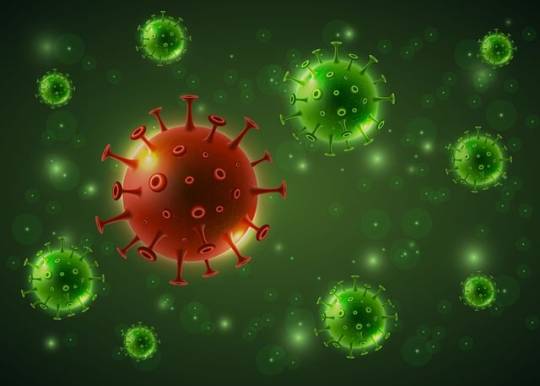
Carcinogenicity studies play a pivotal role in drug development, ensuring safety before human trials. In India, Preclinical Contract Research Organizations (CROs) handle these studies. Here's an overview:
1. Significance of Carcinogenicity Studies:
Carcinogenicity studies evaluate the potential of a drug to cause cancer. They are crucial for regulatory approval and safeguarding public health.
2. Process of Carcinogenicity Studies:
These studies involve administering the test compound to animals for a prolonged period, observing for tumor formation. Both sexes and multiple species are often used to assess the risk comprehensively.
3. Role of Preclinical CROs in India:
Preclinical CROs in India conduct these studies adhering to international guidelines like ICH S1B. They offer expertise in study design, execution, and regulatory compliance.
4. Quality Assurance and Compliance:
Stringent quality control measures ensure reliable results. CROs follow GLP (Good Laboratory Practices) to maintain data integrity and meet regulatory standards.
5. Contribution to Drug Development:
Carcinogenicity studies provide critical data for regulatory submissions. Early detection of carcinogenic potential helps pharmaceutical companies make informed decisions regarding drug development.
6. Future Perspectives:
With advancements in technology and regulatory requirements, the role of CROs in conducting carcinogenicity studies will continue to evolve. Collaboration between CROs, pharmaceutical companies, and regulatory agencies is key for ensuring drug safety and efficacy.
In conclusion, carcinogenicity studies conducted by preclinical CROs in India are integral to the drug development process. These studies uphold safety standards, facilitate regulatory approvals, and ultimately contribute to improving public health.
0 notes
Text
Navigating Surface Water Assessment: Understanding Its Importance in Environmental Conservation
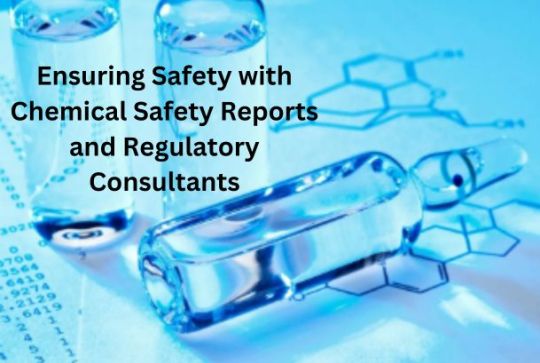
Surface water assessment plays a pivotal role in safeguarding our environment and ensuring the sustainability of water resources. As we delve into the complexities of environmental conservation, it's crucial to explore the significance of monitoring and evaluating surface water quality. In this blog, we will delve into the essence of surface water assessment, its methodologies, and its relevance in contemporary environmental practices. Additionally, we'll explore how preclinical contract research organizations contribute to this field.
Understanding Surface Water Assessment:
Surface water assessment involves the systematic examination of water bodies such as rivers, lakes, and streams to evaluate their quality, health, and ecological integrity. This process encompasses various parameters, including physical, chemical, and biological characteristics, to ascertain the overall health of aquatic ecosystems.
Importance of Surface Water Assessment:
1. Environmental Health:
Surface water assessment serves as an essential tool for monitoring pollution levels and identifying potential threats to aquatic life and human health. By analyzing parameters such as pH levels, dissolved oxygen, and pollutant concentrations, scientists can assess the impact of human activities on water quality.
2. Ecological Balance:
Healthy surface water ecosystems are vital for supporting diverse flora and fauna. Assessing water quality helps in understanding the ecological dynamics of aquatic habitats, including the effects of habitat degradation, invasive species, and climate change.
3. Human Well-being:
Surface water is a primary source of drinking water for communities worldwide. Regular assessment ensures that water treatment facilities can effectively remove contaminants, safeguarding public health from waterborne diseases and toxins.
Methods of Surface Water Assessment:
1. Water Sampling:
Collection of water samples from various points within a water body is essential for analyzing physical and chemical parameters such as temperature, turbidity, nutrient levels, and pollutant concentrations.
2. Laboratory Analysis:
Advanced analytical techniques are employed in laboratories to quantify pollutants, microbial contaminants, heavy metals, and other substances present in water samples. These analyses provide insights into the quality and safety of surface water.
3. Biological Monitoring:
Assessing the health of aquatic organisms, including fish, macroinvertebrates, and algae, offers valuable indicators of water quality and ecosystem integrity. Biological metrics such as species diversity and abundance reflect the overall ecological health of water bodies.
Preclinical Contract Research Organizations (CROs) in Surface Water Assessment:
Preclinical CROs play a significant role in environmental research and testing, including surface water assessment. These specialized organizations offer expertise in conducting toxicity studies, environmental risk assessments, and regulatory compliance evaluations for industries ranging from pharmaceuticals to agrochemicals.
In the context of surface water assessment, preclinical CROs contribute through:
1. Toxicity Testing:
Evaluating the impact of chemical pollutants on aquatic organisms through acute and chronic toxicity studies provides valuable data for assessing water quality and guiding environmental management decisions.
2. Environmental Risk Assessment:
Preclinical CROs conduct comprehensive risk assessments to identify potential hazards associated with industrial activities, agricultural practices, and wastewater discharges, helping stakeholders mitigate environmental risks and comply with regulatory standards.
3. Regulatory Support:
By staying abreast of evolving environmental regulations and guidelines, preclinical CROs assist clients in navigating complex compliance requirements and ensuring responsible stewardship of surface water resources.
Conclusion:
Surface water assessment is indispensable for preserving the health and integrity of aquatic ecosystems and ensuring access to safe drinking water for present and future generations. By employing rigorous methodologies and leveraging the expertise of preclinical contract research organizations, we can advance our understanding of water quality dynamics and implement effective strategies for environmental conservation. Together, we can work towards a sustainable future where surface water resources thrive, supporting both biodiversity and human well-being.
0 notes
Text
Exploring Genetic In-Vitro Toxicology Studies with Essem Compliance

In the dynamic landscape of safety assessment, Contract Research Organizations (CROs) play a pivotal role in providing specialized services tailored to the needs of industries ranging from pharmaceuticals to cosmetics. One such pioneering CRO, Essem Compliance, stands out for its expertise in genetic in-vitro toxicology studies, offering innovative solutions that redefine safety evaluation paradigms.
Essem Compliance: Leading the Way in Genetic In-Vitro Toxicology
Essem Compliance is at the forefront of genetic in-vitro toxicology, offering comprehensive services aimed at assessing the genotoxic potential of chemicals and pharmaceuticals. Leveraging cutting-edge technologies and a multidisciplinary team of experts, Essem Compliance delivers tailored solutions to clients seeking reliable and ethical safety assessment strategies.
Services Offered by Essem Compliance
In-Vitro Assays: Essem Compliance offers a suite of in-vitro assays, including the Ames test, micronucleus assay, comet assay, and fluorescent reporter gene assays. These assays provide valuable insights into the genotoxicity of test substances, aiding in the identification of potential risks to human health.
High Throughput Screening: Essem Compliance utilizes high-throughput screening platforms to expedite the evaluation of numerous compounds simultaneously. This approach enhances efficiency and enables rapid decision-making in safety assessment processes.
Customized Solutions: Recognizing that each client's needs are unique, Essem Compliance provides customized solutions tailored to specific industry requirements and regulatory standards. Whether it's pharmaceuticals, chemicals, or cosmetics, Essem Compliance delivers personalized services to address diverse safety assessment challenges.
Collaboration and Compliance
Essem Compliance emphasizes collaboration and transparency throughout the project lifecycle, fostering partnerships built on trust and integrity. By maintaining compliance with regulatory guidelines and industry best practices, Essem Compliance ensures the reliability and regulatory acceptance of its data, facilitating seamless integration into clients' product development pipelines.
Advantages of Partnering with Essem Compliance
Expertise and Experience: Essem Compliance boasts a team of seasoned professionals with extensive experience in genetic in-vitro toxicology. Clients benefit from the collective knowledge and expertise of Essem Compliance's scientists, ensuring the highest quality of service delivery.
State-of-the-Art Facilities: Equipped with state-of-the-art facilities and instrumentation, Essem Compliance maintains the highest standards of quality and precision in its operations. From cell culture laboratories to advanced imaging systems, Essem Compliance's infrastructure supports the execution of complex in-vitro assays with utmost accuracy and efficiency.
Regulatory Support: Essem Compliance provides comprehensive regulatory support, guiding clients through the intricacies of safety assessment requirements and facilitating regulatory submissions. By staying abreast of evolving regulations and guidelines, Essem Compliance helps clients navigate the regulatory landscape with confidence and compliance.
Future Directions and Collaborative Opportunities
As genetic in-vitro toxicology continues to evolve, Essem Compliance remains committed to innovation and excellence in safety assessment. By fostering collaborative partnerships and embracing emerging technologies, Essem Compliance aims to shape the future of safety evaluation, advancing human health and environmental protection.
In conclusion, Essem Compliance stands as a beacon of excellence in genetic in-vitro toxicology, offering unparalleled expertise, customized solutions, and regulatory compliance. Through its steadfast commitment to quality, integrity, and innovation, Essem Compliance continues to drive advancements in safety assessment, empowering clients to navigate the complexities of product development with confidence and compliance.
0 notes
Text
Unveiling the World of Environmental Fate Studies

Environmental Fate Studies play a pivotal role in understanding the impact of various substances on our environment. In this exploration, we delve into the significance of Environmental Fate Studies and their connection to clinical research organizations in India. As we navigate through the intricacies of these studies, we gain insights into the processes that shape our environment and contribute to the sustainable development of industries.
Understanding Environmental Fate Studies:
Environmental Fate Studies are conducted to assess how substances, whether natural or synthetic, behave in the environment. These studies aim to track the journey of a substance from its introduction into the environment to its eventual breakdown or transformation. By evaluating factors such as degradation, transport, and accumulation, scientists can predict the potential risks and impacts on ecosystems, wildlife, and human health.
Key Components of Environmental Fate Studies:
Degradation Processes:
Environmental Fate Studies investigate how substances break down over time. This includes processes like photodegradation, where exposure to sunlight initiates breakdown, and microbial degradation, where microorganisms play a role in decomposition.
Transport and Distribution:
Understanding how substances move within the environment is crucial. Studies assess factors like mobility in soil, transport through air and water, and accumulation in specific ecological compartments.
Bioaccumulation:
This aspect focuses on the accumulation of substances in living organisms. By studying bioaccumulation, scientists can identify potential risks to the health of organisms and ecosystems.
Exposure Assessment:
Environmental Fate Studies involve evaluating the level and duration of exposure to a substance. This assessment helps in determining potential risks to human health and the environment.
Linking Environmental Fate Studies to Clinical Research Organizations in India:
Clinical research organizations in India play a vital role in the broader spectrum of environmental studies. As industries strive to meet regulatory requirements and adopt sustainable practices, these organizations contribute their expertise to ensure that substances introduced into the environment are thoroughly evaluated.
Expertise in Research Methodologies:
Clinical research organizations in India often possess extensive experience in designing and conducting studies. This expertise extends seamlessly to the realm of Environmental Fate Studies, ensuring robust methodologies and accurate data interpretation.
Regulatory Compliance:
Adherence to regulatory guidelines is paramount in both clinical research and environmental studies. Organizations in India well-versed in clinical research are equipped to navigate complex regulatory frameworks, ensuring that Environmental Fate Studies meet all compliance requirements.
Interdisciplinary Approach:
Environmental Fate Studies demand an interdisciplinary approach, combining expertise in chemistry, biology, and data analysis. Clinical research organizations, accustomed to collaborative efforts, bring together professionals from various fields to ensure a holistic assessment of environmental impacts.
0 notes
Text
Unraveling the Complexities of Animal Toxicity Studies
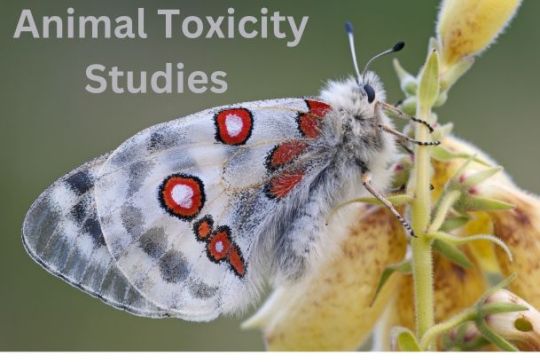
Animal toxicity studies play a pivotal role in ensuring the safety of pharmaceuticals, chemicals, and various consumer products before they reach human and environmental ecosystems. These studies, conducted on a range of species from rodents to non-human primates, aim to assess the potential adverse effects and determine safe exposure levels. While controversial due to ethical concerns, these studies remain an integral part of regulatory frameworks worldwide.
The Purpose:
The primary objective of animal toxicity studies is to identify any harmful effects a substance may have on living organisms, including humans. These studies evaluate a substance's toxicity by examining its impact on organs, tissues, and physiological processes. Researchers carefully analyze factors such as dosage, duration of exposure, and potential cumulative effects to provide comprehensive safety assessments.
Ethical Considerations:
Despite their importance, ethical concerns surrounding animal testing have prompted ongoing efforts to develop alternative methods. Scientists are actively exploring in vitro models, computer simulations, and human cell-based assays to reduce reliance on animal studies. Striking a balance between scientific necessity and ethical responsibility remains a challenge, prompting a global dialogue on refining, reducing, and replacing animal testing.
Future Perspectives:
Advancements in technology and a growing emphasis on ethical research practices are reshaping the landscape of toxicity studies. Collaborative efforts between regulatory bodies, industry stakeholders, and advocacy groups are driving the development of innovative testing approaches. As the scientific community navigates this complex terrain, the goal is clear: safeguarding human and environmental health without compromising ethical principles.
For cutting-edge solutions in toxicity studies, consider exploring the services provided by a reputable contract research organization (CRO). These organizations specialize in providing outsourced research services, including animal toxicity studies, ensuring a high standard of scientific expertise while adhering to ethical standards.
0 notes
Text
The Significance of Aquatic Toxicity Testing
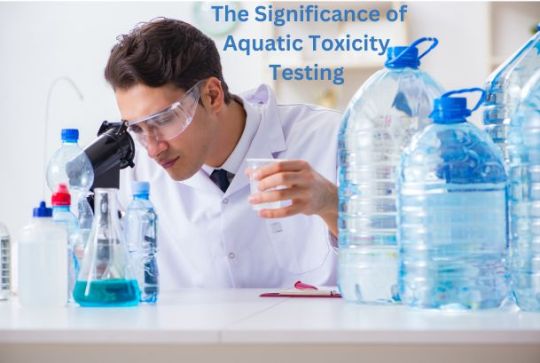
Aquatic toxicity testing is a critical component of environmental assessment, aiming to understand the impact of various substances on aquatic ecosystems. This method plays a pivotal role in safeguarding water quality, ensuring the health of aquatic organisms, and ultimately preserving biodiversity. In India, the focus on aquatic toxicity testing has gained prominence, with Preclinical Contract Research Organizations (CROs) leading the way in conducting comprehensive assessments.
Understanding Aquatic Toxicity Testing:
Aquatic toxicity testing involves evaluating the adverse effects of chemicals, pharmaceuticals, and other substances on aquatic organisms such as fish, algae, and crustaceans. The goal is to identify potential hazards, set regulatory standards, and contribute to environmental conservation.
Importance of Aquatic Toxicity Testing:
Environmental Preservation:
Aquatic ecosystems are vulnerable to pollution, industrial discharges, and emerging contaminants. By conducting aquatic toxicity testing, we can identify potential threats to water bodies and take preventive measures to preserve these ecosystems.
Regulatory Compliance:
Governments worldwide are increasingly stringent about environmental regulations. Aquatic toxicity testing ensures that industries adhere to these standards, promoting responsible and sustainable practices.
Biodiversity Conservation:
Aquatic organisms are crucial for maintaining biodiversity. Testing helps in understanding how different chemicals may impact these organisms, allowing for informed decision-making to protect diverse aquatic life.
Human Health Protection:
Contaminated water sources can pose risks to human health through the consumption of contaminated seafood or water. Aquatic toxicity testing indirectly contributes to safeguarding public health by ensuring water quality.
Preclinical CROs in India:
India has emerged as a hub for Preclinical CROs, offering a wide range of services, including aquatic toxicity testing. These organizations play a vital role in supporting industries by providing accurate and reliable data on the environmental impact of their products.
Expertise and Infrastructure:
Preclinical CROs in India boast state-of-the-art laboratories and a pool of experienced scientists specialized in aquatic toxicity testing. This expertise ensures the generation of high-quality data for clients.
Regulatory Compliance Services:
These CROs navigate the complex landscape of environmental regulations, helping businesses comply with national and international standards. This is crucial for industries looking to expand while maintaining environmental responsibility.
Cost-Effective Solutions:
India's Preclinical CROs offer cost-effective solutions without compromising on quality. This makes them attractive partners for global industries seeking efficient and economical aquatic toxicity testing services.
0 notes
Text
Advancing Ecotoxicology Studies: Collaboration with Clinical Research Organizations in India
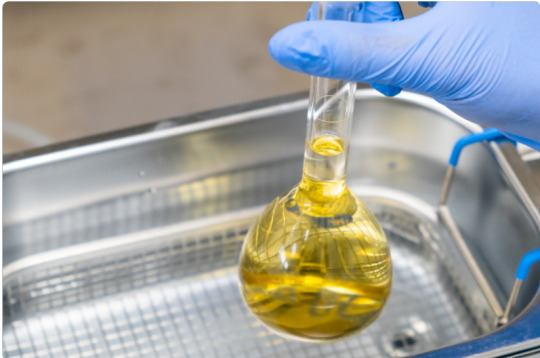
Introduction
Ecotoxicology studies have gained significant traction in recent years, driven by mounting concerns regarding the adverse effects of pollutants on the environment and human health. In response to the challenges posed by industrialization and urbanization, ecotoxicology has emerged as a pivotal field of research. In India, the growth of this field has been complemented by the active involvement of Clinical Research Organizations (CROs) in conducting ecotoxicology studies.
Understanding Ecotoxicology
Ecotoxicology, a scientific discipline, delves into the detrimental impacts of environmental contaminants on ecosystems, encompassing plants, animals, and humans. Its overarching objective is to unravel how pollutants, such as chemicals and heavy metals, influence living organisms and their natural habitats. The insights gleaned from ecotoxicology studies hold immense significance, serving as the bedrock for shaping environmental policies and devising strategies to counteract pollution.
CROs in India: A Catalyst for Ecotoxicology Research
Clinical Research Organizations in India have astutely recognized the demand for comprehensive ecotoxicology research. Renowned for their prowess in executing clinical trials, these organizations have expanded their horizons to address environmental concerns. They offer a multidisciplinary approach, amalgamating toxicology, chemistry, biology, and environmental science to gauge the potential hazards posed by pollutants.
Access to Advanced Resources
The distinctive advantage of CROs in India lies in their access to cutting-edge facilities and a cadre of proficient researchers. Leveraging state-of-the-art technologies and methodologies, they scrutinize the impacts of contaminants on a diverse range of organisms, spanning from microorganisms to vertebrates. This meticulous approach ensures that ecotoxicology studies are conducted with the utmost precision and credibility.
Collaborative Initiatives for Environmental Protection
Moreover, Clinical Research Organizations actively engage in collaborations with governmental bodies, industries, and environmental advocacy groups to conduct ecotoxicology studies. These studies play a pivotal role in identifying pollutants of grave concern, assessing their long-term ramifications, and formulating strategies for pollution control and amelioration.
Conclusion
In summation, ecotoxicology studies have assumed an indispensable role in safeguarding both the environment and human health. Clinical Research Organizations in India have assumed a leading role in this endeavor, capitalizing on their proficiencies to carry out rigorous research. Their partnerships with stakeholders guarantee that ecotoxicology findings translate into tangible actions, positioning them as instrumental entities in the realm of environmental science. As ecotoxicology continues to advance, the collaboration between CROs and the scientific community in India will be vital in tackling the intricate challenges stemming from environmental pollution.
0 notes
Text
Key Factors to Consider When Choosing a Clinical Research Company for Analytical Laboratory Services

In the world of pharmaceuticals, biotechnology, and medical devices, clinical research plays a pivotal role in bringing innovative treatments and therapies to market. Central to this process is the selection of a clinical research company that can provide comprehensive analytical laboratory services. This critical decision can significantly impact the success and efficiency of your research endeavors. In this article, we will delve into the key factors to consider when choosing a clinical research company for analytical laboratory services.
1. Expertise and Reputation
When evaluating clinical research companies, it's crucial to assess their expertise and reputation in the field. Look for companies with a proven track record of conducting successful clinical trials and providing high-quality analytical laboratory services. Consider factors such as the number of years they've been in operation, the types of projects they've worked on, and any industry awards or certifications they hold.
2. Regulatory Compliance
Compliance with regulatory standards is paramount in clinical research. Ensure that the company you choose adheres to the relevant regulatory guidelines, such as Good Laboratory Practices (GLP) and Good Clinical Practices (GCP). A company that consistently complies with these standards will help you avoid regulatory hurdles and ensure the integrity of your research data.
3. State-of-the-Art Facilities and Equipment
The quality of analytical laboratory services depends on the facilities and equipment available. Verify that the clinical research company possesses state-of-the-art laboratories equipped with cutting-edge instrumentation. Well-maintained and up-to-date equipment ensures accurate and reliable results in your research.
4. Specialization and Therapeutic Expertise
Different clinical research companies may specialize in various therapeutic areas, such as oncology, cardiology, or infectious diseases. Choose a company that aligns with your specific research needs. Their experience in your therapeutic area can bring valuable insights and efficiency to your project.
5. Capacity and Scalability
Consider the capacity and scalability of the clinical research company. Can they handle the volume of work required for your project? Scalability is essential, especially if your research project may expand in scope or require additional resources in the future. Ensure the company can adapt to your evolving needs.
6. Data Management and Reporting
Efficient data management and reporting are critical components of clinical research. Evaluate the company's data management systems and reporting capabilities. Clear and concise reporting can facilitate decision-making and regulatory submissions.
7. Geographic Location
Geographic location can impact logistical considerations, such as sample transportation and communication. Consider the location of the clinical research company in relation to your research sites and partners. Proximity can simplify collaboration and reduce potential delays.
8. Cost and Budget Alignment
While cost should not be the sole determining factor, it is essential to align your budget with the services offered by the clinical research company. Request detailed cost estimates and evaluate them in the context of the services, expertise, and quality provided. Balance cost considerations with the value and reliability of the services.
9. References and Client Feedback
Don't hesitate to request references from past clients or seek out client feedback and testimonials. Hearing about the experiences of others who have worked with the clinical research company can provide valuable insights into their strengths and weaknesses.
Conclusion
Choosing the right clinical research company for analytical laboratory services is a critical decision that can significantly impact the success of your research endeavors. By considering factors such as expertise, regulatory compliance, facilities, specialization, capacity, data management, location, cost, and references, you can make an informed choice that aligns with your research goals and ensures the highest quality outcomes. Take the time to thoroughly assess your options, as this decision is a crucial step toward advancing medical knowledge and improving patient care.
0 notes
Text
0 notes
Text
0 notes